Resorcinol
Synonym(s):1,3-Benzenediol;1,3-Dihydroxybenzene;Resorcinol
- CAS NO.:108-46-3
- Empirical Formula: C6H6O2
- Molecular Weight: 110.11
- MDL number: MFCD00002269
- EINECS: 203-585-2
- SAFETY DATA SHEET (SDS)
- Update Date: 2025-01-27 09:38:02

What is Resorcinol?
Absorption
The dermal absorption of resorcinol seems to be low (< 1%) when applied on healthy and intact skin . The agent absorbed very slightly under normal conditions & the absorption was lower when applied to the scalp than to clean shaven skin due to a strong fixation by the hair .
Toxicity
Effects in man include CNS effects, mainly in persons who have used creams containing high levels of resorcinol, effects on the erythrocytes (especially methaemoglobinaemia, mainly in babies and infants) and, after prolonged exposure, effects on the thyroid gland (like goiter or especially chronic myxoedema) . In addition, exogenous ochronosis is associated with prolonged exposure to resorcinol . In persons suffering from resorcinol poisoning, the symptoms included anemia, spleen siderosis, and fatty degeneration of the liver and kidneys .
Description
Resorcinol is a white crystalline solid with acharacteristic odor and a sweetish taste. Turns pink onexposure to air or light, or contact with iron. Molecularweight =110.12; Boiling point =277.2℃; Freezing/Melting point =108.9℃; Vapor pressure= 0.0002 mmHg at 25℃; Flash point = 127.2℃ (cc); Autoignitiontemperature = 607℃. Explosive limits: LEL = 1.4% at200℃. UEL—unknown. Hazard Identification (based onNFPA-704 M Rating System): Health 3, Flammability 1,Reactivity 0. Highly soluble in water; solubility = 110%.
Chemical properties
crystals or powder
Chemical properties
Resorcinol is a white crystalline solid with a characteristic odor and a sweetish taste. Turns pink on expo- sure to air or light, or contact with iron.
Chemical properties
Resorcinol is odorless.
Occurrence
Reported found in roasted barley, cane molasses, beer, red wine, white wine, special wine and coffee.
The Uses of Resorcinol
In very mild solutions, resorcinol is used as an anti-septic and soothing preparation for itchy skin. In slightly higher concentrations, resorcinol removes the top layer of the stratum corneum and is used particularly in cases of acne. In still higher concentrations, it can act as an aggressive surface skin exfoliant. Resorcinol can also be used as a preservative. While it is a beneficial skin care ingredient when used in low concentrations, it causes irritation in higher concentrations with a strong burning sensation and a reddening of the skin. used in high concentrations as a peel, resorcinol may cause a variety of problems, including swelling. It is is obtained from various resins.
The Uses of Resorcinol
A benzene derivative used as keratolytic and antiseborrheic. Also used in veterinary medicine as a topical antipruritic and antiseptic (has been used as intestinal antiseptic).
The Uses of Resorcinol
anthelmintic
The Uses of Resorcinol
An aromatic alcohol used as a chemical intermediate
The Uses of Resorcinol
Resorcinol is used in the manufacture of resorcinol–formaldehyde resins, resin adhesives, dyes, drugs, andexplosives; in tanning; in cosmetics; and in dyeing and printing textiles.
Indications
Contemporary therapeutic uses for resorcinol primarily revolve around the use of the phenol derivative as an active ingredient in topical antiseptics or as topical antibacterial skin treatment products for conditions like acne, seborrheic dermatitis, eczema, and others .
Background
Resorcinol is a 1,3-isomer (or meta-isomer) of benzenediol with the formula C6H4(OH)2. It is used as an antiseptic and disinfectant in topical pharmaceutical products in the treatment of skin disorders and infections such as acne, seborrheic dermatitis, eczema, psoriasis, corns, calluses, and warts. It exerts a keratolytic activity. Resorcinol works by helping to remove hard, scaly, or roughened skin.
Definition
ChEBI: A benzenediol that is benzene dihydroxylated at positions 1 and 3.
Indications
Resorcinol (resorcin), a phenol derivative, is less keratolytic than salicylic acid. This drug is an irritant and sensitizer and reported to be both bactericidal and fungicidal. Solutions containing 1% to 2% have been used in preparations for seborrhea, acne, and psoriasis.
Aroma threshold values
Detection: 6 to 40 ppm
Synthesis Reference(s)
Tetrahedron Letters, 35, p. 8727, 1994 DOI: 10.1016/S0040-4039(00)78482-6
General Description
Very white crystalline solid that becomes pink on exposure to light if not completely pure. Burns although ignition is difficult. Density approximately 1.28 g / cm3. Irritating to skin and eyes. Toxic by skin absorption. Used to make plastics and pharmaceuticals.
Air & Water Reactions
Hygroscopic. Soluble in water.
Reactivity Profile
Resorcine is a weak organic acid. Incompatible with acetanilide, albumin, alkalis, antipyrine, camphor, iron salts, menthol, spirit nitrous ether, and urethane. Can react with oxidizing materials . Has a potentially explosive reaction with concentrated nitric acid [Lewis]. Turns pink on contact with iron.
Hazard
Irritant to skin and eyes. Questionable car- cinogen.
Health Hazard
Inhalation of vapors or dust causes irritation of respiratory tract. Ingestion causes burns of mucous membranes, severe diarrhea, pallor, sweating, weakness, headache, dizziness, tinnitus, shock, and severe convulsions; may also cause siderosis of the spleen and tubular injury to the kidney. Contact with eyes causes irritation. Can be absorbed from wounds or through unbroken skin, producing severe dermatitis, methemoglobinemia, cyanosis, convulsions, tachycardia, dyspnea, and death.
Health Hazard
The acute oral toxicity of resorcinol is moderate in most test animals. It is less toxic than phenol or catechol. Ingestion or skin absorption can cause methemoglobinemia, cyanosis, and convulsions. Vapors or dusts are irritant to mucous membranes. Contact with the skin or eyes can cause strong irritation. An amount of 100 mg caused severe irritation in rabbit eyes.
LD50 value, oral (rats): 301 mg/kg (NIOSH 1986).
Fire Hazard
Behavior in Fire: Containers may explode.
Flammability and Explosibility
Non flammable
Contact allergens
Resorcinol is used in hairdressing as a modifier (or a coupler) of the PPD group of dyes. It is the least frequent sensitizer in hairdressers. It is also used in resins, in skin treatment mixtures, and for tanning. Severe cases of dermatitis due to resorcinol contained in wart preparations have been reported.
Biochem/physiol Actions
Resorcinol is an aromatic alcohol serves as an antiseptic. It reduces pain from painful nodules in patients suffering from Hidradenitis suppurativa (HS).
Pharmacokinetics
The effectiveness of the agent in treating various topical, dermatological conditions by eliciting antibacterial and keratolytic actions appears to stem from resorcinol's propensity for protein precipitation. In particular, it appears that resorcinol indicated for treating acne, dermatitis, or eczema in various skin care topical applications and peels revolves around the compound's ability to precipitate cutaneous proteins from the treated skin.
Safety Profile
Human poison by ingestion. Experimental poison by ingestion, intraperitoneal, parenteral, and subcutaneous routes. Moderately toxic experimentally by skin contact and intravenous routes. Questionable carcinogen with experimental tumorigenic data. Human mutation data reported. A skin and severe eye irritant. It can cause systemic poisoning by acting as both a blood and nerve poison. In a suitable solvent, this material can readily be absorbed through human skin and can cause local hyperemia, itching, dermatitis, edema, and corrosion associated with enlargement of regonal lymph glands as well as serious systemic disorders such as restlessness, methemoglobinemia, cyanosis, convulsions, tachycardia, dyspnea, and death. These same symptoms can be induced by ingestion of the material. For poisoning, treat symptomatically. Get medical advice. Used as a topical antiseptic and keratolytic agent. Combustible when exposed to heat or flame; can react with oxidming materials. To fight fEe, use water, CO2, dry chemical. Potentially explosive reaction with concentrated nitric acid. Incompatible with acetadde, alkalies, ferric salts, spirit nitrous ether, urethan. When heated to decomposition it emits acrid smoke and irritating fumes
Potential Exposure
Resorcinol is weakly antiseptic; resorcinol compounds are used in the production of resorcinol-formaldehyde adhesives; or as an intermediate; in pharmaceuticals and hair dyes for human use. Major industrial uses are as adhesives in rubber products and tires, wood adhesive resins, and as ultraviolet absorbers in polyolefin plastics. Resorcinol is also a by-product of coal conversion and is a component of cigarette smoke. Thus, substantial opportunity exists for human exposure.
First aid
If this chemical gets into the eyes, remove anycontact lenses at once and irrigate immediately for at least15 min, occasionally lifting upper and lower lids. Seek medical attention immediately. If this chemical contacts theskin, remove contaminated clothing and wash immediatelywith soap and water. Seek medical attention immediately. Ifthis chemical has been inhaled, remove from exposure,begin rescue breathing (using universal precautions, including resuscitation mask) if breathing has stopped and CPR if heart action has stopped. Transfer promptly to a medicalfacility. When this chemical has been swallowed, get medical attention. Give large quantities of water and inducevomiting. Do not make an unconscious person vomit.Note to physician: Treat for methemoglobinemia.Spectrophotometry may be required for precise determination of levels of methemoglobin in urine. Emergency treatment and management is similar to phenol.
Carcinogenicity
Acute Toxicity. The primary signs of intoxication
resemble those induced by phenol, and include initial stimulation
of the CNS, followed by depression, renal glomerular
and tubular degeneration, central hepatic necrosis, myocardial
depression, pruritus, and reddening of the skin. Resorcinol
has been reported to be less toxic than phenol or
pyrocatechol by oral and dermal routes.
Resorcinol is a simple aromatic chemical (1,3-benzenediol)
that has found widespread use, particularly as a coupler
in hair dyes. Clinical experience clearly shows that resorcinol
is a skin sensitizer, although several predictive tests have
been negative. In a local lymph node assay performed in
accordance with OECD Guideline 429, resorcinol was identified
as a skin sensitizer.
Few reports of the toxicity
of resorcinol have been published. Oral ingestion in humans
may cause methemoglobinemia, cyanosis, and convulsions,
whereas dermal exposure has been reported to cause dermatitis,
hyperemia, and pruritus. Industrial inhalation
exposures are rather rare, but could occur in any industry
if the compound is heated beyond 300°F.
Pathology reported for humans
includes anemia, marked siderosis of the spleen and marked
tubular injury in the kidney, fatty changes of the liver,
degenerative changes in the kidney, fatty changes of the
heart muscle, moderate enlargement and pigmentation of
the spleen, and edema and emphysema of the lungs.
Safety
Resorcinol is commonly used in hair dyes and acne medication. In higher doses it is toxic and can disrupt the function of the central nervous system and lead to respiratory problems. It has also been shown to disrupt the endocrine system, specifically thyroid function.
storage
Color Code—Blue: Health Hazard/Poison: Storein a secure poison location. Prior to working with thischemical you should be trained on its proper handling andstorage. Before entering confined space where this chemicalmay be present, check to make sure that an explosive concentration does not exist. Store in tightly closed containersin a cool, well-ventilated area away from oxidizers, oil, ferric salts, methanol, acetanilide, albumin, antipyrine, andurethane. Where possible, automatically transfer materialfrom drums or other storage containers to process containers. Sources of ignition, such as smoking and open flames,are prohibited where this chemical is handled, used, orstored. Metal containers involving the transfer of this chemical should be grounded and bonded. Wherever this chemical is used, handled, manufactured, or stored, useexplosion-proof electrical equipment and fittings.
Shipping
UN2876 Resorcinol, Hazard Class: 6.1; Labels: 6.1-Poisonous materials.
Purification Methods
Crystallise resorcinol from *benzene, toluene or *benzene/diethyl ether. The benzoate has m 117o. [Beilstein 6 IV 2069.]
Incompatibilities
Reacts with oxidizers, nitric acid; oil, ferric salts; methanol, acetanilide, albumin, antipyrene, alkalies, urethane, ammonia, amino compounds. Hygroscopic; absorbs moisture from the air.
Waste Disposal
Consult with environmental regulatory agencies for guidance on acceptable disposal practices. Generators of waste containing this contaminant (≥100 kg/mo) must conform with EPA regulations govern- ing storage, transportation, treatment, and waste disposal. Dissolve in a combustible solvent and incinerate.
Properties of Resorcinol
| Melting point: | 109-112 °C(lit.) |
| Boiling point: | 281 °C |
| Density | 1.27 |
| vapor density | 3.8 (vs air) |
| vapor pressure | 1 mm Hg ( 21.1 °C) |
| refractive index | 1.5781 |
| FEMA | 3589 | RESORCINOL |
| Flash point: | 340 °F |
| storage temp. | Store below +30°C. |
| solubility | H2O: soluble1M at 20°C, clear, faintly yellow |
| form | Liquid |
| Colour Index | 76505 |
| pka | 9.81(at 25℃) |
| color | white |
| PH | 4-6 (100g/l, H2O, 20℃) |
| Odor | at 1.00 % in propylene glycol. nutty creamy phenolic hawthorn musty |
| explosive limit | 1.4%(V) |
| Water Solubility | 140 g/100 mL |
| Sensitive | Light Sensitive |
| Merck | 14,8155 |
| JECFA Number | 712 |
| BRN | 906905 |
| Exposure limits | TLV-TWA 10 ppm (~45 mg/m3) (ACGIH); STEL 20 ppm (ACGIH). |
| Dielectric constant | 3.2(0.0℃) |
| Stability: | Stable. Incompatible with strong oxidizing agents. May discolour on exposure to air or light. |
| CAS DataBase Reference | 108-46-3(CAS DataBase Reference) |
| NIST Chemistry Reference | Resorcinol(108-46-3) |
| IARC | 3 (Vol. 15, Sup 7, 71) 1999 |
| EPA Substance Registry System | Resorcinol (108-46-3) |
Safety information for Resorcinol
| Signal word | Danger |
| Pictogram(s) |
 Corrosion Corrosives GHS05  Exclamation Mark Irritant GHS07  Health Hazard GHS08  Environment GHS09 |
| GHS Hazard Statements |
H302:Acute toxicity,oral H315:Skin corrosion/irritation H317:Sensitisation, Skin H318:Serious eye damage/eye irritation H370:Specific target organ toxicity, single exposure H371:Specific target organ toxicity, single exposure H410:Hazardous to the aquatic environment, long-term hazard |
| Precautionary Statement Codes |
P273:Avoid release to the environment. P280:Wear protective gloves/protective clothing/eye protection/face protection. P301+P312:IF SWALLOWED: call a POISON CENTER or doctor/physician IF you feel unwell. P302+P352:IF ON SKIN: wash with plenty of soap and water. P305+P351+P338:IF IN EYES: Rinse cautiously with water for several minutes. Remove contact lenses, if present and easy to do. Continuerinsing. |
Computed Descriptors for Resorcinol
| InChIKey | GHMLBKRAJCXXBS-UHFFFAOYSA-N |
Resorcinol manufacturer
Gravitas Pharma Pvt Ltd
JSK Chemicals
ARRAKIS INDUSTRIES LLP
New Products
3-Iodophenylacetic acid 3-Pyridineacetonitrile, α-hydroxy- 2-Propanamine, 1-chloro-, hydrochloride (9CI) 3-(hexyloxy)-4-(pyridin-3-yl)-1,2,5-thiadiazole 2-Hexyn-1-ol Dibenzo-18-crown-6 Nickel(II) perchlorate hexahydrate, 98% 4-Bromophenylacetonitrile, 95% 3-Bromo-4-fluoroaniline, 97% Sodium tetraborate decahydrate, 98% Palladium(II) acetate, trimer, Pd 99% 4-Bromo-2-chlorotoluene, 97% N N Dimethylformamide Dimethyl Acetal (Dmf Dma) 2,3-Dichloro Benzoyl Cyanide [Side Chain] Bis(2-Chloroethyl) Amine Hydrochloride L-Glutamic Acid Diethyl Ester Hydrochloride 5-(Difluoromethoxy)-2-Mercaptobenzimidazole 1-Ethyl-3-(3-Dimethylaminopropyl)-Carbodiimide Hydrochloride [EDC Hcl] 1,4-Napthoquinone Bromoiodomethane Sodium Bicarbonate Methylene Dichloride (MDC) Ethyl Acetate Indole-3-Carbinol (I3C)Related products of tetrahydrofuran
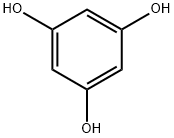



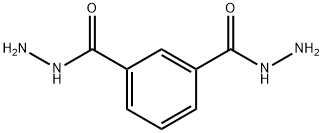
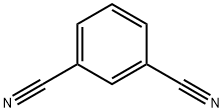
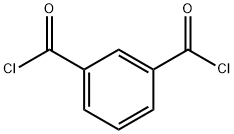
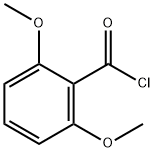
You may like
-
 Resorcinol 98%View Details
Resorcinol 98%View Details -
 Resorcinol 99%View Details
Resorcinol 99%View Details -
 Resorcinol, For analysis ACS CAS 108-46-3View Details
Resorcinol, For analysis ACS CAS 108-46-3View Details
108-46-3 -
 Resorcinol, For analysis ACS CAS 108-46-3View Details
Resorcinol, For analysis ACS CAS 108-46-3View Details
108-46-3 -
 Resorcinol 95% CAS 108-46-3View Details
Resorcinol 95% CAS 108-46-3View Details
108-46-3 -
 Resorcinol CASView Details
Resorcinol CASView Details -
 Resorcinol CASView Details
Resorcinol CASView Details -
 Resorcinol 1.3 - Dihydroxybenzene CASView Details
Resorcinol 1.3 - Dihydroxybenzene CASView Details
